You’ve most likely heard that the deadlift is likely one of the finest muscle- and strength-building workouts you are able to do.
True.
You could have additionally heard that of all of the deadlift variations the “standard deadlift” is the very best of the bunch, and that you just have to deadlift conventionally to get the complete advantages of the train.
False.
Whereas the traditional deadlift means that you can raise extra weight than most different varieties of deadlifts, it’s not essentially very best for everybody, particularly if it aggravates your joints otherwise you don’t get pleasure from it.
However as you’ll study on this article, there’s nothing extraordinary in regards to the standard deadlift.
Sure, it’s an amazing train and value doing should you prefer it, however you’ll be able to achieve muscle and power simply as successfully with different deadlift variations.
Which deadlift variations particularly? In my expertise of working with hundreds of individuals, these varieties of deadlifts are the very best:
- Typical deadlift
- Sumo deadlift
- Lure-bar deadlift
- Romanian deadlift
- Stiff-leg deadlift
- Deficit deadlift
- Rack pull (block deadlift)
- Pause deadlift
- Snatch-grip deadlift
- Single-leg dumbbell Romanian deadlift
- Dumbbell deadlift
- Dumbbell Romanian deadlift
- Kettlebell deadlift
- Suitcase deadlift
- Reeves deadlift
On this article, you’ll study why these are the 15 finest deadlift variations, how one can do them accurately, and extra.
Key Takeaways
- You don’t have to rely solely on the traditional deadlift—a number of deadlift variations can construct muscle and power simply as successfully.
- Every sort of deadlift trains your physique barely otherwise and can assist obtain totally different objectives.
- The very best deadlift for you will depend on what you need to obtain, the tools you’ve gotten accessible, and your private preferences.
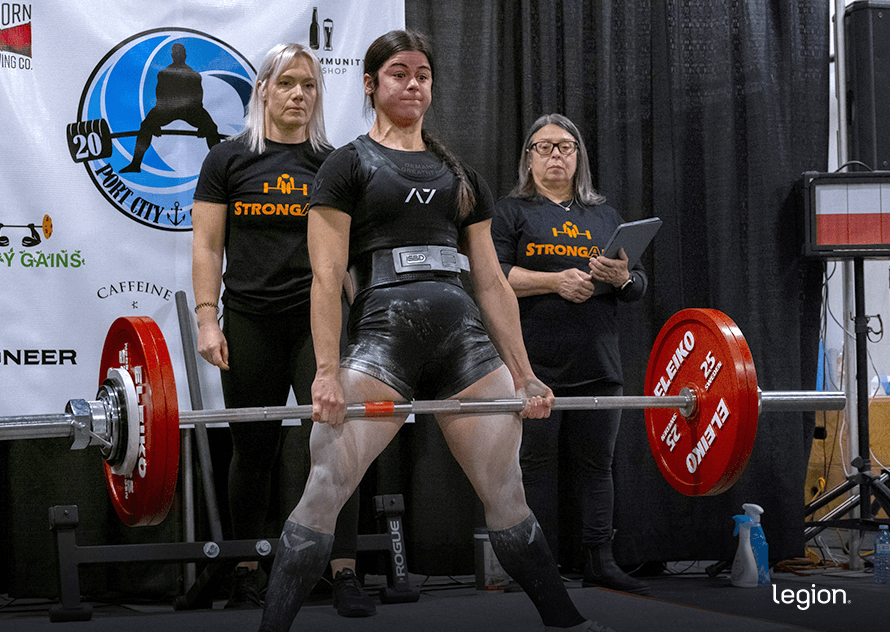

The 15 Finest Deadlift Variations
The next 15 deadlift variations every provide distinctive advantages, so irrespective of how you want to coach, what tools you’ve gotten accessible, or what limitations you’ve gotten bodily, you’ll discover one to suit completely into your deadlift routine.
We’ll break down why every sort of deadlift is efficient, what units it other than different deadlift variations, and how one can carry out it to maximise muscle and power features safely.
1. Typical Deadlift
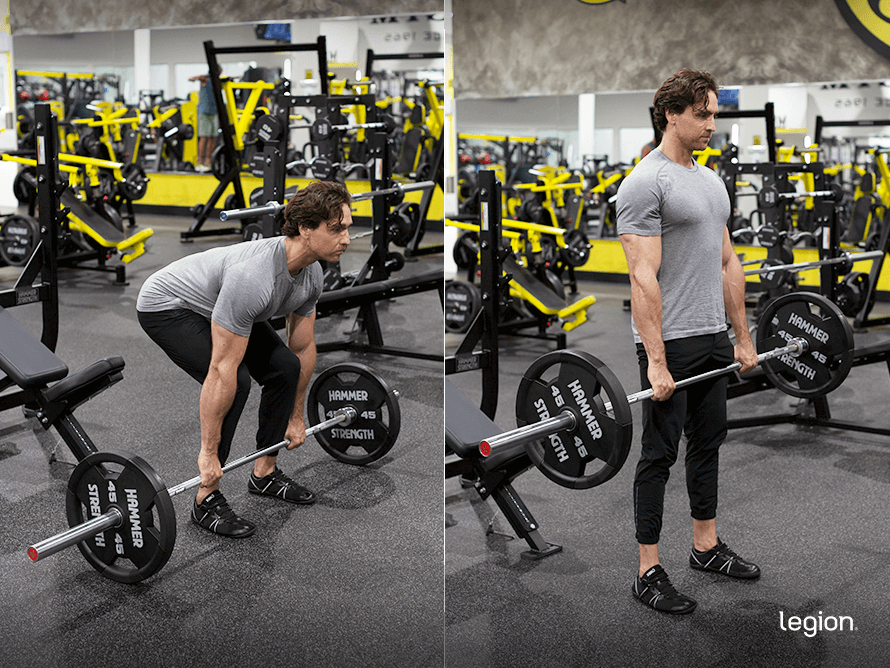

Why: Many individuals consider the traditional deadlift because the king of deadlift variations as a result of it’s straightforward to study, requires no specialist deadlift bar, and trains virtually each muscle in your posterior chain (the muscular tissues on the again of your physique), together with your lats, traps, decrease again, glutes, hamstrings, and calves.
What’s extra, the traditional deadlift additionally trains muscular tissues on the entrance of your physique, similar to your quads, forearms, core, and shoulders, boosts full-body power and energy, improves athletics efficiency, and should even assist relieve decrease again ache.
The best way to:
- Place your ft barely narrower than shoulder-width, with toes identified.
- Place a barbell about an inch out of your shins over your midfoot.
- Take a deep stomach breath, and grip the bar simply outdoors your shins with palms going through you.
- Flatten your again, then drive upward and barely again by pushing by your heels till upright.
- Reverse the motion and return to the beginning place.
READ MORE: The best way to Deadlift with Correct Approach
2. Sumo Deadlift
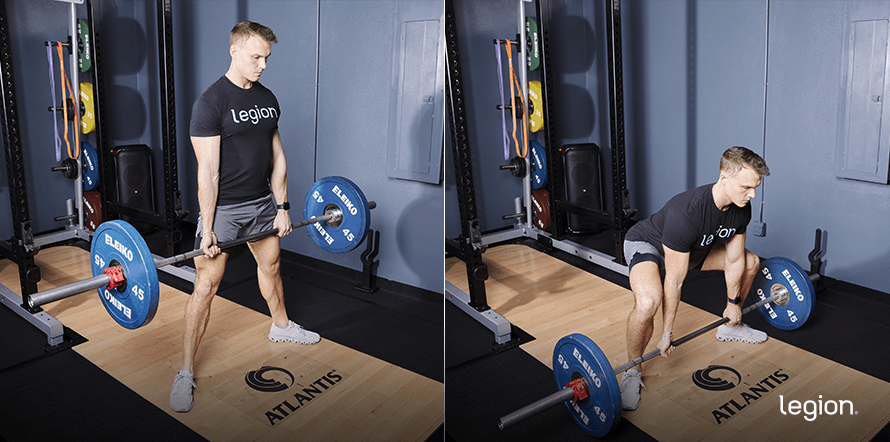

Why: The sumo deadlift has you are taking a wider-than-shoulder-width stance and level your toes outward, which locations your hips nearer to the bar and your again in a extra upright place than within the conventional deadlift.
Regardless of these variations in type, research present that the sumo and traditional deadlift practice principally the identical muscular tissues to virtually the identical diploma. The one minor distinction is that the sumo deadlift trains your quads barely extra, whereas the traditional deadlift emphasizes your again muscular tissues.
Thus, the sumo deadlift is a wonderful sort of deadlift for anybody who needs to concentrate on growing their legs or take among the stress off of their decrease again.
The best way to:
- Place your ft 1.5-to-2 occasions shoulder-width together with your toes turned out, and place a barbell about an inch out of your shins over your midfoot.
- Hold your again straight and drop your butt by bending your knees.
- Grip the bar with a shoulder-width grip and your palms going through you.
- Take a deep breath and get up, dragging the bar up your shins.
- Reverse the motion and return to the beginning place.
READ MORE: The Definitive Information to the Sumo Deadlift
3. Lure-Bar Deadlift
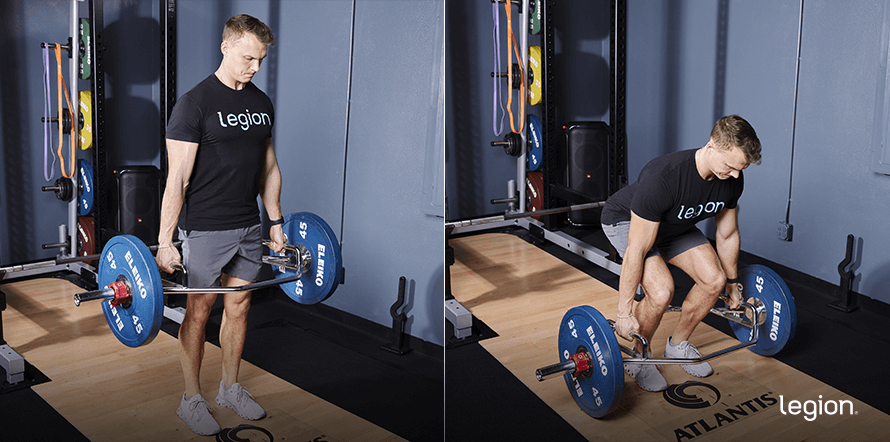

Why: The trap-bar deadlift (or “hex-bar deadlift”) is similar as the traditional deadlift, besides it’s carried out with a lure bar. There are two key variations between the traditional deadlift and the trap-bar deadlift:
- The traditional deadlift emphasizes the decrease again and hamstrings, and the trap-bar deadlift emphasizes the quads.
- You can pull lure bars sooner than barbells, which implies trap-bar deadlifts are higher if you wish to practice your muscular tissues to generate energy.
For most individuals, the traditional deadlift and trap-bar deadlift are interchangeable. Nonetheless, should you’re an athlete who must generate pressure (energy) quickly or should you’re coaching round a again damage, the trap-bar deadlift could also be a greater deadlift variant for you.
The best way to:
- Place your ft shoulder-width aside within the middle of the lure bar.
- Hinge at your hips, barely arch your decrease again, and grip the handles.
- Push by your heels to drive your physique upward and barely again.
- Reverse the motion and return and the beginning place.
READ MORE: The best way to Lure-Bar Deadlift with Correct Kind (with a Free 12-Week Coaching Plan!)
4. Romanian Deadlift
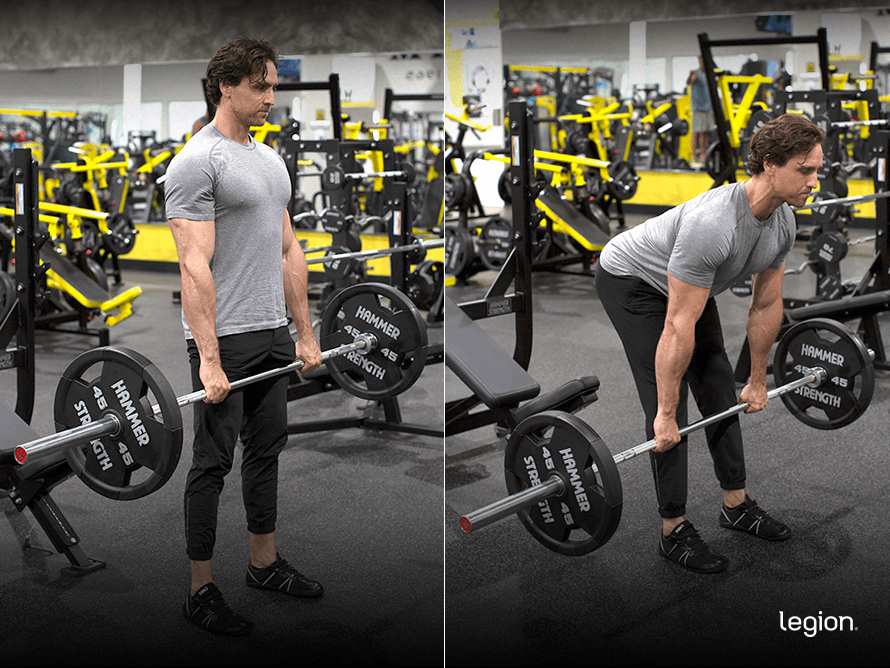

Why: The Romanian deadlift (RDL) trains the posterior chain in a really comparable strategy to the traditional deadlift. Nonetheless, due to the distinction in type, it emphasizes your hamstrings slightly than your again and doesn’t practice your quads a lot in any respect.
Of all of the totally different variations of deadlifts, the Romanian deadlift is likely one of the least fatiguing, so you are able to do it extra usually with out carrying your self to a frazzle. For this reason it’s usually finest to program the Romanian deadlift after one other fatiguing lower-body train, just like the squat, on a day you aren’t doing one other sort of deadlift (this lets you practice your entire “deadlift muscular tissues” no less than twice per week).
The best way to:
- Stand holding a barbell with a shoulder-width overhand grip (palms going through you).
- Hinge at your hips, preserving your again flat, and decrease the bar in a straight line, letting your hips transfer backward.
- If you really feel a stretch in your hamstrings, bend your knees barely and preserve reducing the barbell till your again begins to spherical.
- Reverse the motion and return to the beginning place.
READ MORE: The Definitive Information to the Romanian Deadlift (and the Finest Variations!)
5. Stiff-Leg Deadlift
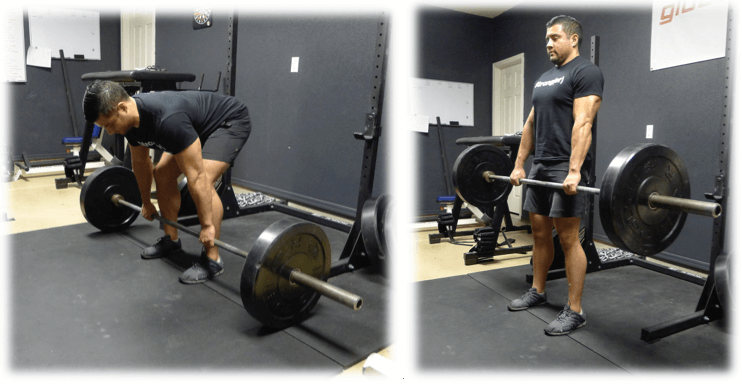

Why: The stiff-leg deadlift is nearly similar to the Romanian deadlift, besides the bar begins and finishes every rep on the ground.
Analysis exhibits that the stiff-leg deadlift is an efficient deadlift variation for glute, hamstrings, and decrease again improvement as a result of it has a protracted vary of movement and trains the muscular tissues on the again of your legs in a stretched place, which is mostly higher for muscle development.
Nonetheless, most individuals can’t raise as a lot weight utilizing the stiff-leg deadlift as they will with different varieties of deadlifts, it may be uncomfortable should you don’t have good flexibility or have decrease again points, and it may be tough to study.
For this reason most individuals desire different deadlift variations, such because the Romanian deadlift, to the stiff-leg deadlift.
The best way to:
- Stand holding a barbell with a shoulder-width overhand grip.
- Hinge at your hips, preserving your again flat, and decrease the bar in a straight line whereas preserving your legs virtually utterly straight.
- As soon as the plates contact the ground, reverse the motion and return to the beginning place.
READ MORE: The best way to Do Stiff-Leg Deadlifts: Kind, Muscle mass Labored & Extra
6. Deficit Deadlift
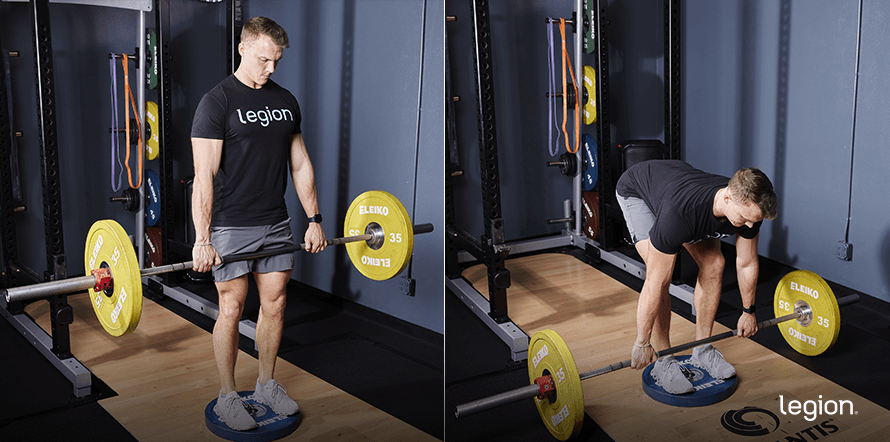

Why: The deficit deadlift is a difficult development of the traditional deadlift carried out together with your ft elevated 2-to-3 inches on a weight plate or platform.
The elevated vary of movement on the backside of every rep forces your posterior chain to work tougher by what’s usually essentially the most difficult portion of a deadlift.
By strengthening your physique on this place, you usually discover your standard deadlift numbers improve if you return to pulling from the ground.
Nonetheless, that is a complicated coaching “device” finest suited to these targeted on maximizing deadlift efficiency. For learners or those that practice primarily for muscle development, there are extra applicable deadlift variations to select from.
The best way to:
- Stand on a weight plate and place your ft barely narrower than shoulder-width aside with toes identified.
- Place a barbell about an inch out of your shins over your midfoot.
- Take a deep stomach breath, and grip the bar simply outdoors your shins with palms going through you.
- Flatten your again, then drive upward and barely again by pushing by your heels till upright.
- Reverse the motion and return to the beginning place.
READ MORE: The best way to Do the Deficit Deadlift to Enhance Pulling Power
7. Rack Pull (Block Deadlift)


Why: The rack pull is an analogous sort of deadlift to the traditional deadlift, besides you start with the bar resting on the security arms of a squat rack at about knee peak.
As a result of the bar begins from an elevated place, rack pulls have a a lot shorter vary of movement than the traditional deadlift, which implies you’ll be able to rack pull extra weight than you’ll be able to deadlift.
You need to use rack pulls in a few methods:
- To complement your standard deadlifts: Rack pulling along with deadlifting means that you can practice comparable muscular tissues with out the pressure of deadlifting twice per week.
- To switch standard deadlifts: Rack pulls are a sensible various should you’re working round an damage that standard deadlifts worsen.
The best way to:
- Place a barbell on the squat rack’s security arms at knee peak or a bit decrease.
- Place your midfoot underneath the bar, ft barely narrower than shoulder-width, with toes barely out.
- Bend over and seize the bar with an overhand grip simply outdoors your shins.
- Flatten your again and push by your heels to face up straight.
- Reverse the motion and return to the beginning.
READ MORE: Rack Pulls: Advantages, Kind & Variations
8. Pause Deadlift
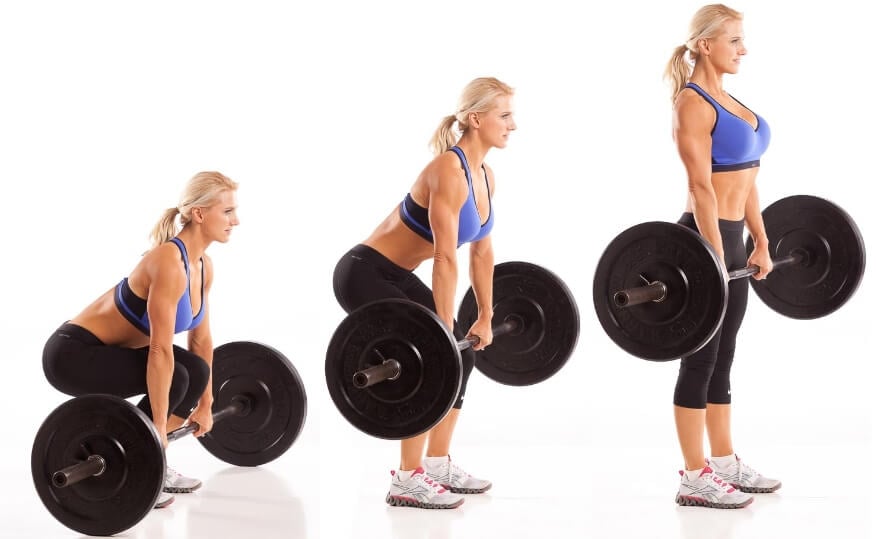

Why: The pause deadlift is a sort of deadlift the place you pause for 1-to-2 seconds when the bar is someplace between mid-shin and knee peak. It’s helpful as a result of many individuals fail the deadlift within the “second section” of the train, because the bar travels between your mid-shin and knee.
Pausing as you raise the burden trains your muscular tissues to turn out to be stronger on this place, which makes it much less seemingly that you just’ll fail within the mid portion of the train and will improve your efficiency if you return to common deadlifting.
Just like the deficit deadlift, nonetheless, the pause deadlift isn’t vital for many weightlifters, particularly learners. Except you’re a aggressive weightlifter or your major focus is bettering your deadlift efficiency, you most likely don’t want to incorporate the pause deadlift in your routine.
The best way to:
- Place your ft barely narrower than shoulder-width, with toes identified.
- Place a barbell about an inch out of your shins over your midfoot.
- Take a deep stomach breath, and grip the bar simply outdoors your shins with palms going through you.
- Flatten your again, then drive upward and barely again by pushing by your heels.
- When the bar is between mid-shin and knee peak, pause for 1-to-2 seconds.
- Proceed pulling till you’re upright.
- Reverse the motion with out pausing and return to the beginning place.
9. Snatch-Grip Deadlift
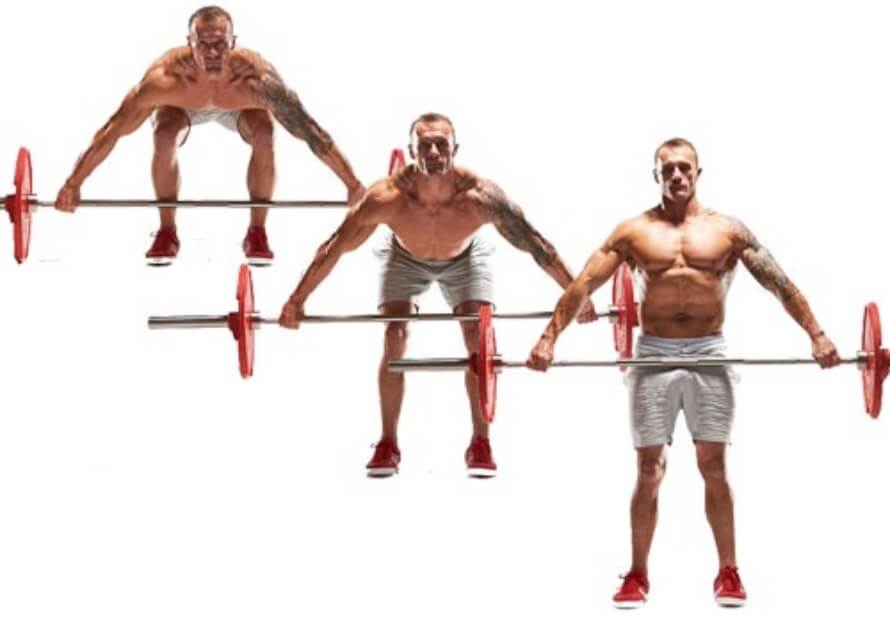

Why: The snatch-grip deadlift is a sort of deadlift carried out with a “snatch grip”—a large grip mostly utilized in Olympic weightlifting.
(To seek out the right width of a snatch grip for you, stand upright and grip a barbell at a width that locations it in your hip crease whereas your arms are straight.)
By gripping the bar with a snatch grip, you improve . . .
- The space the bar has to journey to finish a rep, which implies your legs must work tougher than they do within the standard deadlift
- The quantity of labor your forearm and again muscular tissues must do, which is why many individuals use snatch-grip deadlift variations for again coaching
Nonetheless, you’ll be able to raise far much less weight with the snatch-grip deadlift than you’ll be able to with different deadlift variations, and many individuals don’t have sufficient flexibility of their ankles, knees, and hips to get into the right beginning place.
That’s why I like to recommend utilizing the snatch-grip deadlift as an “accent train” to enhance your again power and deadlift efficiency, however not as the principle deadlift variation in your program.
The best way to:
- Place your ft barely narrower than shoulder-width, with toes identified.
- Place a barbell about an inch out of your shins over your midfoot.
- Take a deep stomach breath, and grip the bar with a snatch grip and your palms going through you.
- Flatten your again, then drive upward and barely again by pushing by your heels till upright.
- Reverse the motion and return to the beginning place.
10. Single-Leg Dumbbell Romanian Deadlift
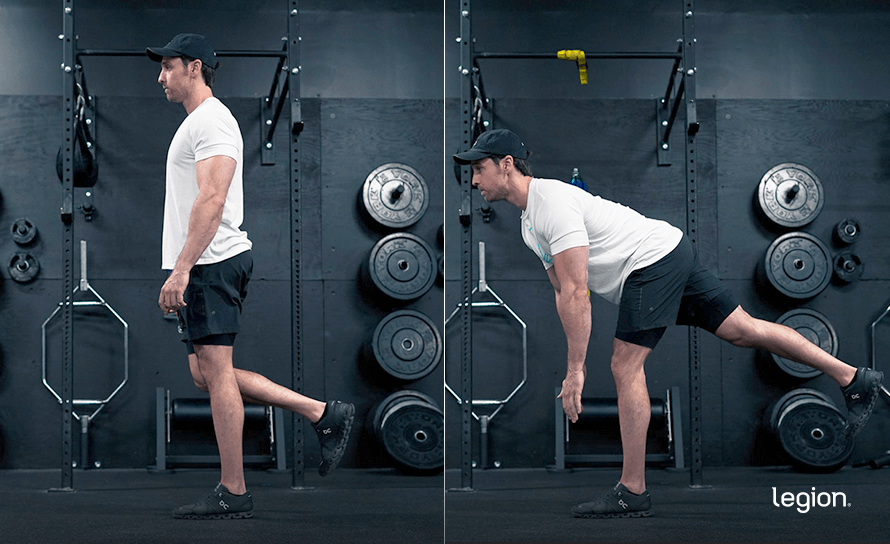

Why: The principle advantages of the single-leg dumbbell Romanian deadlift are that it has an extended vary of movement than the common Romanian deadlift, which is mostly higher for muscle development. It additionally trains both sides of your physique independently, which implies it’s helpful for locating and fixing muscle imbalances.
The draw back is which you can’t use practically as a lot weight as you’ll be able to with the common Romanian deadlift, and sustaining your steadiness turns into tougher as you get stronger.
For this reason I like to recommend you persist with the normal Romanian deadlift, and solely use single-leg deadlift variations if you don’t have entry to a barbell or heavy dumbbells (when touring or coaching at dwelling, for instance).
The best way to:
- Stand with a dumbbell in your left hand in entrance of your left thigh.
- Decrease the burden towards the ground, preserving your left leg principally straight as your hips transfer again and lengthening your proper leg behind you.
- If you really feel a stretch in your left hamstring, bend your left knee barely to proceed reducing the burden till your again is about to spherical.
- Reverse the motion and return to the beginning place.
- Full the specified reps, then change sides and repeat.
11. Dumbbell Deadlift
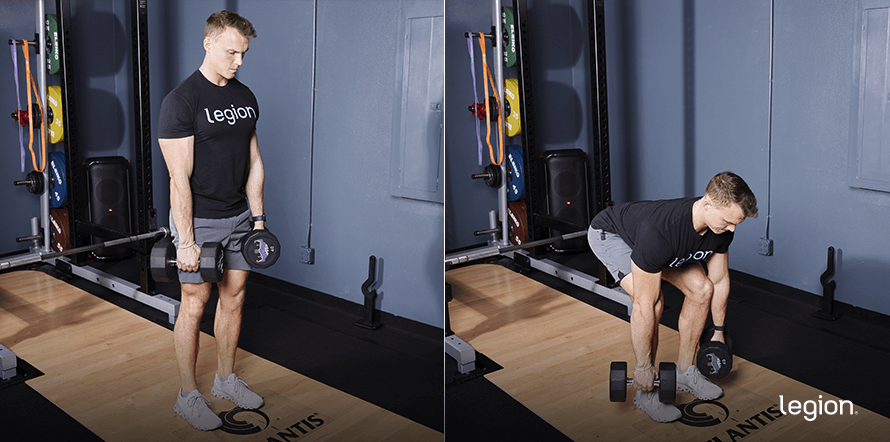

Why: The dumbbell deadlift is carried out like the traditional barbell deadlift, besides you employ a pair of dumbbells as a substitute of a barbell.
The most important draw back of deadlift variations with dumbbells is that they restrict the quantity of weight you’ll be able to pull. What’s extra, as a result of dumbbells transfer independently, it may be tough to raise them in a straight vertical line throughout every rep.
That mentioned, dumbbell deadlifts are a wonderful introduction to deadlifting for learners who don’t have the power to deadlift a barbell but. Additionally they require a lot much less tools, so that they’re a strong choice for individuals who practice at dwelling.
The best way to:
- Stand upright holding a dumbbell in every hand, palms going through your thighs.
- Along with your arms straight and dumbbells beneath your shoulders, hinge on the hips, bend your knees, and arch your decrease again barely.
- Bend your knees a bit extra because the dumbbells cross them, reducing till they’re 6-to-8 inches from the ground.
- Reverse the motion and return to the beginning place.
12. Dumbbell Romanian Deadlift
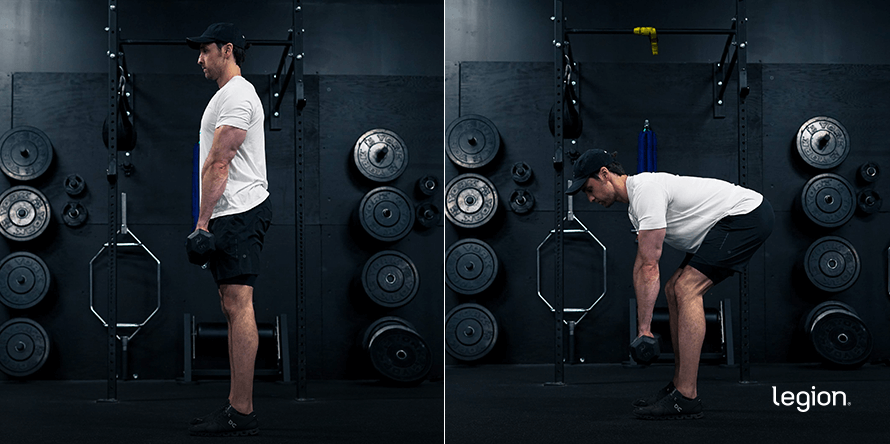

Why: Dumbbell Romanian deadlifts are similar to the barbell model however provide just a few distinctive advantages. When you can’t load them as closely as a barbell, dumbbells allow you to coach by a bigger vary of movement since they received’t hit the bottom as simply as weight plates.
That is helpful as a result of coaching by higher ranges of movement usually produces extra muscle development and power features than coaching by smaller ones.
Dumbbells additionally make RDLs extra accessible. You’ll be able to carry out them in small areas with minimal tools, making them good for dwelling exercises. The flexibility to begin with very mild weights makes them a wonderful entry level for learners who aren’t robust sufficient to raise a barbell, too.
The best way to:
- Stand holding a dumbbell in every hand, palms going through your thighs.
- Hinge at your hips, preserving your again flat, and decrease the dumbbells in a straight line, letting your hips transfer backward.
- If you really feel a stretch in your hamstrings, bend your knees barely and preserve reducing the dumbbells till your again begins to spherical.
- Reverse the motion and return to the beginning place.
13. Kettlebell Deadlift
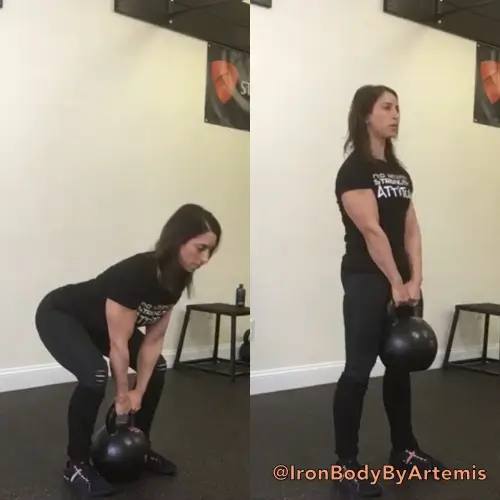

Why: The principle advantage of the kettlebell deadlift is that it requires little or no tools and area, which implies it’s a superb choice should you work out at dwelling.
The most important draw back, nonetheless, is that even essentially the most well-equipped gyms solely have kettlebells as much as round 70-to-80 kilos, which limits how far you’ll be able to progress. That’s why it is best to solely use kettlebell deadlift variations if you don’t have entry to a barbell or heavy dumbbells.
The best way to:
- Place your ft barely narrower than shoulder-width, with toes identified.
- Place a kettlebell between your ft according to your midfoot.
- Take a deep stomach breath, and grip the deal with with palms going through you.
- Flatten your again, then drive upward and barely again by pushing by your heels till upright.
- Reverse the motion and return to the beginning place.
14. Kettlebell Suitcase Deadlift
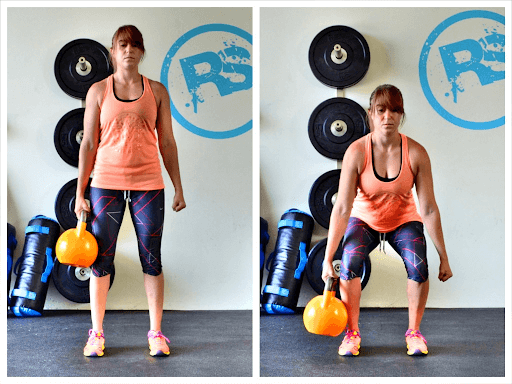

Why: The kettlebell suitcase deadlift is a novel deadlift variation that emphasizes core stability. Because you’re lifting the burden on one aspect of your physique, it forces your obliques and core to work tougher to withstand rotation, which builds a robust, steady midsection.
This makes it an amazing train for bettering steadiness and “purposeful” (real-world) power, particularly for actions like carrying groceries or baggage.
One other huge benefit of the kettlebell suitcase deadlift is how little tools you want—you are able to do it in virtually any area with only a single kettlebell. This makes it good for dwelling exercises or whereas touring.
Nonetheless, most gyms don’t have very heavy kettlebells, which might restrict the load you should utilize for this train. Due to this, the kettlebell suitcase deadlift is extra suited to constructing core stability and steadiness slightly than max power.
The best way to:
- Place your ft barely narrower than shoulder-width, with toes identified.
- Place a kettlebell beside your proper foot, according to your midfoot.
- Take a deep stomach breath and grip the deal with together with your proper hand, palm going through you.
- Flatten your again, brace your core, and drive upward and barely again by pushing by your heels till you’re standing upright.
- Reverse the motion and return to the beginning place.
- When you’ve accomplished the specified reps, change sides and repeat.
15. Reeves Deadlift
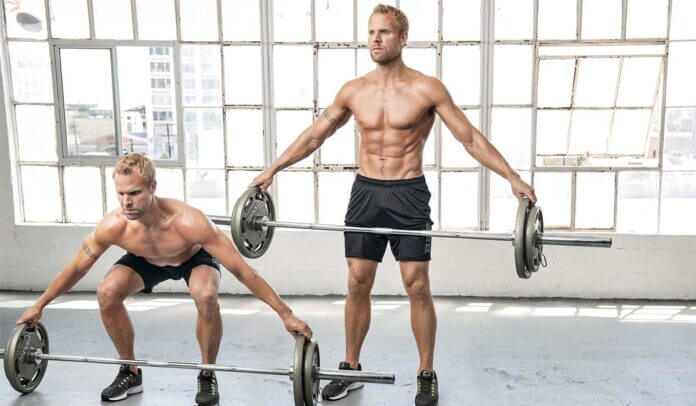

Why: The Reeves deadlift is a novel variation of the traditional deadlift the place you maintain the burden by the plates as a substitute of the bar, which tremendously will increase the demand in your grip and higher again power.
If you wish to enhance your grip power and endurance or problem your higher again stability, the Reeves deadlift could be a strong addition to a deadlift routine. Nonetheless, since you’ll be able to’t raise practically as a lot weight as you’ll be able to with extra conventional deadlift variations, the Reeves deadlift isn’t the very best sort of deadlift for gaining general muscle and power.
The best way to:
- Place your ft barely narrower than shoulder-width, with toes identified.
- Place a barbell about an inch out of your shins over your midfoot.
- Take a deep stomach breath, then pinch the burden plates together with your palms going through you.
- Flatten your again, then drive upward and barely again by pushing by your heels till upright.
- Reverse the motion and return to the beginning place.
FAQ #1: Barbell deadlift vs. Dumbbell deadlift: Which is finest?
Neither the barbell deadlift nor dumbbell deadlift is best or worse than the opposite. Which you select will depend on your objectives.
The barbell deadlift means that you can raise heavier weights, so it’s very best for anybody trying to maximize muscle and power achieve. The dumbbell deadlift, alternatively, requires much less tools and means that you can begin lighter, which makes it very best for learners or those that like to coach at dwelling.
RELATED: The Full Newbie’s Information to Weightlifting
FAQ #2: What’s the finest deadlift variation for glutes?
All deadlift variations practice the glutes to a big diploma, so you’ll be able to select whichever you get pleasure from most.
That mentioned, the Romanian deadlift, stiff-leg deadlift, and deficit deadlift practice the glutes in a extra stretched place than most different varieties of deadlift, which can profit development in some situations. And for that purpose, it’s price together with no less than considered one of these variations in your program if constructing your glutes is a high precedence.
RELATED: Rising Your Butt: Finest Glute-Targeted Workout routines
FAQ #3: What are single-leg deadlift variations good for?
Single-leg deadlift variations are good for addressing muscle imbalances, which might enhance general power and symmetry. As a result of they’re inherently unstable, they could additionally improve athletic efficiency and practice smaller stabilizer muscular tissues—just like the glute minimus—greater than bilateral deadlift variations (those who practice each side of the physique concurrently).
RELATED: Unilateral vs. Bilateral Workout routines: Which Is Higher for Muscle Constructing and Efficiency?
FAQ #4: What number of varieties of deadlift are there?
There are a lot of deadlift variations, every with its personal advantages and functions. On this article, we’ve coated 15 of the very best, however there are a lot of extra viable varieties that contain totally different tools (e.g., varied deadlift bars or banded deadlifts) and motion patterns (e.g., the Jefferson deadlift or Dorian deadlift).
FAQ #5: What are the very best kettlebell deadlift variations?
My favourite kettlebell deadlift variations are the kettlebell deadlift and suitcase deadlift. That mentioned, you’ll be able to carry out any of the deadlifts above with kettlebells as a substitute of a barbell or dumbbells.
Scientific References +
- Nigro, F., & Bartolomei, S. (2020). A Comparability Between the Squat and the Deadlift for Decrease Physique Power and Energy Coaching. Journal of Human Kinetics, 73(1), 145. https://doi.org/10.2478/HUKIN-2019-0139
- Thompson, Brennan J, et al. “Barbell Deadlift Coaching Will increase the Fee of Torque Growth and Vertical Leap Efficiency in Novices.” Journal of Power and Conditioning Analysis, vol. 29, no. 1, 2015, pp. 1–10, www.ncbi.nlm.nih.gov/pubmed/25226322, https://doi.org/10.1519/JSC.0000000000000691.
- Delvecchio, Luke. “Mini Evaluate J Yoga & Physio the Deadlift -Half 1.” J Yoga & Physio, vol. 5, no. 5, 2018, juniperpublishers.com/jyp/pdf/JYP.MS.ID.555674.pdf, https://doi.org/10.19080/JYP.2018.05.555674. Accessed 12 Nov. 2024.
- Berglund, L., Aasa, B., Hellqvist, J., Michaelson, P., & Aasa, U. (2015). Which Sufferers with Low Again Ache Profit from Deadlift Coaching? Journal of Power and Conditioning Analysis, 29(7), 1803–1811. https://doi.org/10.1519/JSC.0000000000000837
- Escamilla, R. F., Francisco, A. C., Fleisig, G. S., Barrentine, S. W., Welch, C. M., Kayes, A. V., Speer, Ok. P., & Andrews, J. R. (2000). A 3-dimensional biomechanical evaluation of sumo and traditional fashion deadlifts. Drugs and Science in Sports activities and Train, 32(7), 1265–1275. https://doi.org/10.1097/00005768-200007000-00013
- ESCAMILLA, R. F., FRANCISCO, A. C., KAYES, A. V., SPEER, Ok. P., & MOORMAN, C. T. (2002). An electromyographic evaluation of sumo and traditional fashion deadlifts. Drugs and Science in Sports activities and Train, 34(4), 682–688. https://doi.org/10.1097/00005768-200204000-00019
- Cholewicki, J., et al. “Lumbar Backbone Masses throughout the Lifting of Extraordinarily Heavy Weights.” Drugs and Science in Sports activities and Train, vol. 23, no. 10, 1 Oct. 1991, pp. 1179–1186, pubmed.ncbi.nlm.nih.gov/1758295/.
- Swinton, P. A., Stewart, A., Agouris, I., Keogh, J. W. L., & Lloyd, R. (2011). A biomechanical evaluation of straight and hexagonal barbell deadlifts utilizing submaximal masses. Journal of Power and Conditioning Analysis, 25(7), 2000–2009. https://doi.org/10.1519/JSC.0B013E3181E73F87
- Lake, J., Duncan, F., Jackson, M., & Naworynsky, D. (2017). Impact of a Hexagonal Barbell on the Mechanical Demand of Deadlift Efficiency. Sports activities 2017, Vol. 5, Web page 82, 5(4), 82. https://doi.org/10.3390/SPORTS5040082
- Lee, S., Schultz, J., Timgren, J., Staelgraeve, Ok., Miller, M., & Liu, Y. (2018). An electromyographic and kinetic comparability of standard and Romanian deadlifts. Journal of Train Science and Health, 16(3), 87–93. https://doi.org/10.1016/J.JESF.2018.08.001
- Boone, T., Board, R., Astorino, T., Baker, J., Brock, S., Dalleck, L., Goulet, E., Gotshall, R., Hutchison, A., Knight-Maloney, M., Kravitz, L., Laskin, J., Lim, Y. A., Lowery, L., Marks, D., Mermier, C., Robergs, R., Vella, C., Wagner, D., … Serrão, J. C. (2013). Journal of Train Physiologyonline Quantity 16 Quantity 3 Editor-in-Chief Electromyographic Exercise of Decrease Physique Muscle mass throughout the Deadlift and Nonetheless-Legged Deadlift.
- Oranchuk, D. J., Storey, A. G., Nelson, A. R., & Cronin, J. B. (2019). Isometric coaching and long-term diversifications: Results of muscle size, depth, and intent: A scientific overview. Scandinavian Journal of Drugs & Science in Sports activities, 29(4), 484–503. https://doi.org/10.1111/SMS.13375
- Kubo, Ok., Ikebukuro, T., & Yata, H. (2019). Results of squat coaching with totally different depths on decrease limb muscle volumes. European Journal of Utilized Physiology, 119(9), 1933–1942. https://doi.org/10.1007/S00421-019-04181-Y
- Ok. Beckham, G., S. Lamont, H., Sato, Ok., W. Ramsey, M., G., G. H., & H. Stone, M. (2012). Isometric Power of Powerlifters in Key Positions of the Typical Deadlift. Journal of Trainology, 1(2), 32–35. https://doi.org/10.17338/TRAINOLOGY.1.2_32
- Kompf, Justin, and Ognjen Arandjelović. “Understanding and Overcoming the Sticking Level in Resistance Train.” Sports activities Drugs, vol. 46, no. 6, 12 Jan. 2016, pp. 751–762, https://doi.org/10.1007/s40279-015-0460-2.
- Chicken, S., & Barrington-Higgs, B. (2010). Exploring the deadlift. Power and Conditioning Journal, 32(2), 46–51. https://doi.org/10.1519/SSC.0B013E3181D59582
- Liao, Kai-Fang , et al. Results of Unilateral vs. Bilateral Resistance Coaching Interventions on Measures of Power, Leap, Linear and Change of Path Pace: A Systematic Evaluate and Meta-Evaluation. 3 July 2021, pp. 2022;39(3):485-497, https://doi.org/10.5114/biolsport.2022.107024.

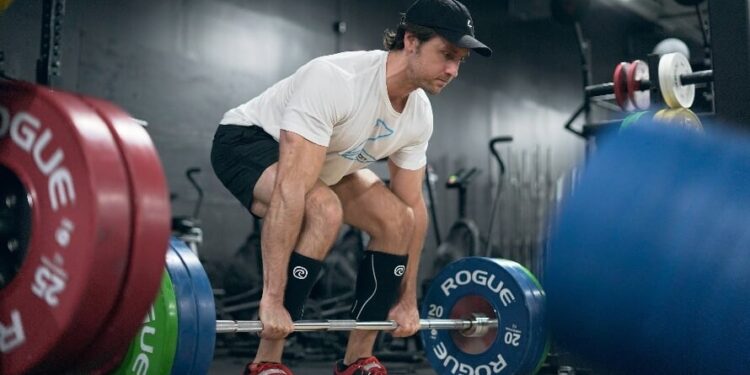








Discussion about this post